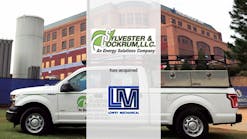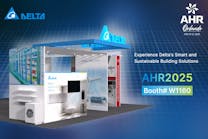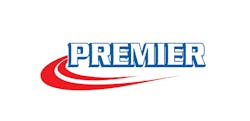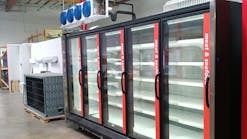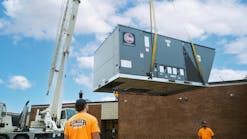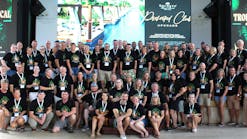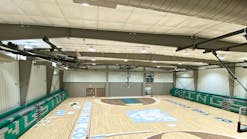By Terry E. Townsend, P.E.
You’ve undoubtedly heard a lot about sustainability and green buildings. Here are some questions that I am frequently asked. My sources for answers come from publications and materials that are available from the American Society of Heating, Refrigerating and Air-Conditioning Engineers (ASHRAE) and the U.S. Green Building Council (USGBC).
What’s the meaning of sustainability and how does it apply to green buildings? One definition of sustainability is “any action that takes into account that ‘tomorrow matters.’” Green buildings represent the result of a team effort (owners, designers, contractors, and facility managers) to produce and maintain a facility that is energy efficient, has a healthy environment, and provides comfort to its occupants while minimizing the impact on natural resources.
Why the concern about having sustainable buildings? Buildings affect the lives of people and the health of the planet. The majority of people spend most of their time indoors. In the U.S., buildings use more than one-third of our total energy, two-thirds of our electricity, one-fifth of our water, contribute one-fifth of landfill waste, and transform land that once provided valuable ecological services. Atmospheric emissions from the generation and use of energy lead to acid rain, ground-level ozone, smog, and global climate change. Sustainable buildings soften the impact on the planet due to reduced energy and water consumption, less landfill waste, and better utilization of the land in order to minimize any disturbance to ecological components.
Who is interested in having a sustainable building? What are the advantages and disadvantages associated with these types of buildings? The acceptance of sustainable building concepts originally was dominated by U.S. government agencies (General Services Administration, Army, NASA, etc.) and is now rapidly becoming driven by both the public sector (educational systems) and private sectors (multi-family housing, commercial office centers, etc.).
The advantages of a sustainable building include healthier interior spaces, better natural lighting applications, and greater flexibility in space layouts, all of which have a positive impact on occupant performance and satisfaction.
The disadvantages of having a sustainable building are primarily based on two factors. The first is that the team must work together from concept, through design, construction, start-up and operation. If any of the team members fail in their duties, the facility will not perform as intended. The second factor is that sustainable buildings may require a different approach to operation due to the use of more natural phenomena (lighting, ventilation, water collection and storage, etc.) that conventional buildings don’t normally have.
Does it cost more to have a sustainable building? Various government agencies are closely monitoring the actual costs of constructing a sustainable building, and comparing them to conventional construction techniques that utilize the requirements of applicable building codes as a basis for the construction. Of the 100+ facilities that have been evaluated to date, the actual average costs of sustainable buildings ranged between 2% more to 5% less than the “budgeted” conventional construction costs for these facilities.
What educational tools and programs are available to someone who may be interested in designing, building, and operating a sustainable building? Two excellent resources are the USGBC and ASHRAE. Look at ANSI/ASHRAE/IESNA Standard 90.1, Energy Standard for Buildings Except Low-Rise Residential Buildings, and the suite of Advanced Energy Design Guide documents being jointly developed by ASHRAE, the USGBC, the American Institute of Architects, the Illuminating Engineering Society of North America, the New Buildings Institute, and the Department of Energy. These documents will collectively provide a prescriptive, what-to-do method to achieve energy savings that are 30%, 50%, and, eventually, 75% greater than what most building codes currently require.
The USGBC has a collection of Leadership in Energy and Environmental Design (LEED) programs that provide guidance on criteria and items to include in the design and construction of a sustainable facility. The Advanced Energy Design Guides also will provide support and assistance to those who want to participate in a LEED certification program.
Terry E. Townsend, P.E., is vice president of ASHRAE. He can be reached at 423/855-1184, or [email protected].
